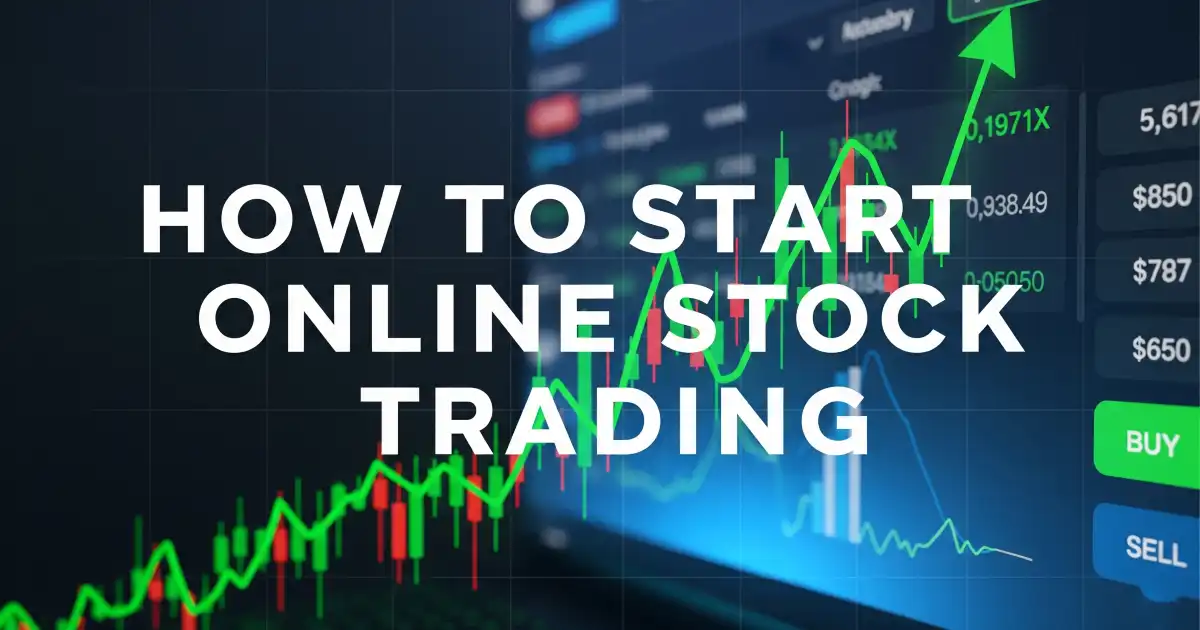The world of online stock trading can seem like a bustling foreign city from the outside. You see the movement, hear the stories of opportunity, and feel the pull of potential. But taking that first step through the gate feels intimidating. Where do you even begin?
Many people imagine a scene from a movie flashing screens, frantic yelling, and high-stakes pressure. The reality of starting today is far quieter, much more accessible, and something you can do from your kitchen table. It’s a journey of education and cautious first moves, not a sprint to instant riches.
This guide will walk you through your first steps into online stock trading. We’ll cover how to choose a platform, place your first trade, and develop the mindset you need to navigate the markets. Let’s demystify the process together.
Laying Your Foundation
Jumping straight into buying stocks without a plan is like going on a road trip without a map. You might eventually get somewhere interesting, but you’re more likely to get lost. Your first investment shouldn’t be money; it should be time.
Start by learning the basic language of the market. Understand what a stock actually represents (a small share of ownership in a company), what an ETF is (a basket of stocks you can buy at once), and the difference between a market order and a limit order (which we’ll get to later).
More importantly, get real about your finances. The money you use for trading should be money you are truly comfortable with putting at risk. It should not be your rent money, your emergency fund, or cash you’ll need for a big purchase next year. The market can be unpredictable, and protecting your financial well-being is your number one job.
Choosing Your Trading Platform: Your Gateway to the Market
Your online broker is your partner in this endeavor. This is the website or app where you’ll place your trades. The good news is that competition has driven costs down to zero at most major brokers, meaning you can trade stocks without paying commission fees.
When comparing platforms like Fidelity, Charles Schwab, E*TRADE, or TD Ameritrade, look for a few key things:
- User-Friendly Design: Is the website or app intuitive and easy to navigate? You don’t want to be fighting with confusing menus to place a simple order.
- Educational Resources: The best brokers for beginners offer a wealth of learning materials—articles, webinars, video tutorials—to help you grow your knowledge.
- Robust Mobile App: You’ll likely want to check on your investments from your phone. A well-designed, reliable app is essential.
- Customer Support: When you have a question or run into trouble, you want to know that helpful, accessible support is available.
Many of these platforms offer virtual trading or “paper money” accounts. This is a risk-free way to practice placing trades and getting a feel for the platform before you use real money. It’s the single best way to build confidence.
Your First Trade: Making the Leap
Once your brokerage account is open and funded, you’re ready for your first trade. The process is surprisingly simple, but understanding the mechanics is crucial.
You’ll typically be presented with an order ticket. Here’s what you need to know:
- Symbol: This is the unique ticker symbol for the company (e.g., AAPL for Apple, MSFT for Microsoft).
- Action: Are you buying or selling?
- Quantity: How many shares do you want?
- Order Type: This is the most important choice for a new trader.
- Market Order: This tells the broker to buy the stock at the best available price right now. It’s fast, but the price you get might be slightly different from what you saw a moment ago if the market is moving quickly.
- Limit Order: This gives you control. You set the maximum price you’re willing to pay for a stock. The trade will only execute if the stock is available at your price or better. It might not fill immediately, but it guarantees you won’t pay more than you intended.
For your very first trade, a limit order is often the smarter, safer choice. It prevents you from getting caught off guard by a sudden price jump the moment you click “buy.”
Developing a Trader’s Mindset
The technical part of trading is easy. The psychological part is the real challenge. The market is a rollercoaster of ups and downs, and your emotions will try to take the wheel. The goal is to keep a steady hand.
Start small. Your first trades should be with an amount of money so small that a loss wouldn’t keep you up at night. This takes the emotional pressure off and allows you to think clearly.
Understand that losses are part of the game. Every single trader, no matter how experienced, has losing trades. The key is not to avoid losses but to manage them. Never let a small loss turn into a catastrophic one because you were hoping it would turn around.
Finally, focus on the long game. The most successful investors are not day traders chasing hot tips; they are people who build diversified portfolios of companies they believe in and hold them for years. Think of yourself as a business owner, not a gambler.
You’re Ready to Begin
Starting your online stock trading journey is an exciting step toward taking control of your financial future. It begins with education, is executed through a chosen platform with careful first trades, and is sustained by a disciplined, patient mindset.
Don’t feel like you need to learn everything at once. Take it one step at a time. Open an account, explore the tools, practice with paper trading, and make your first small, thoughtful investment. The learning never stops, and that’s what makes it so engaging.



